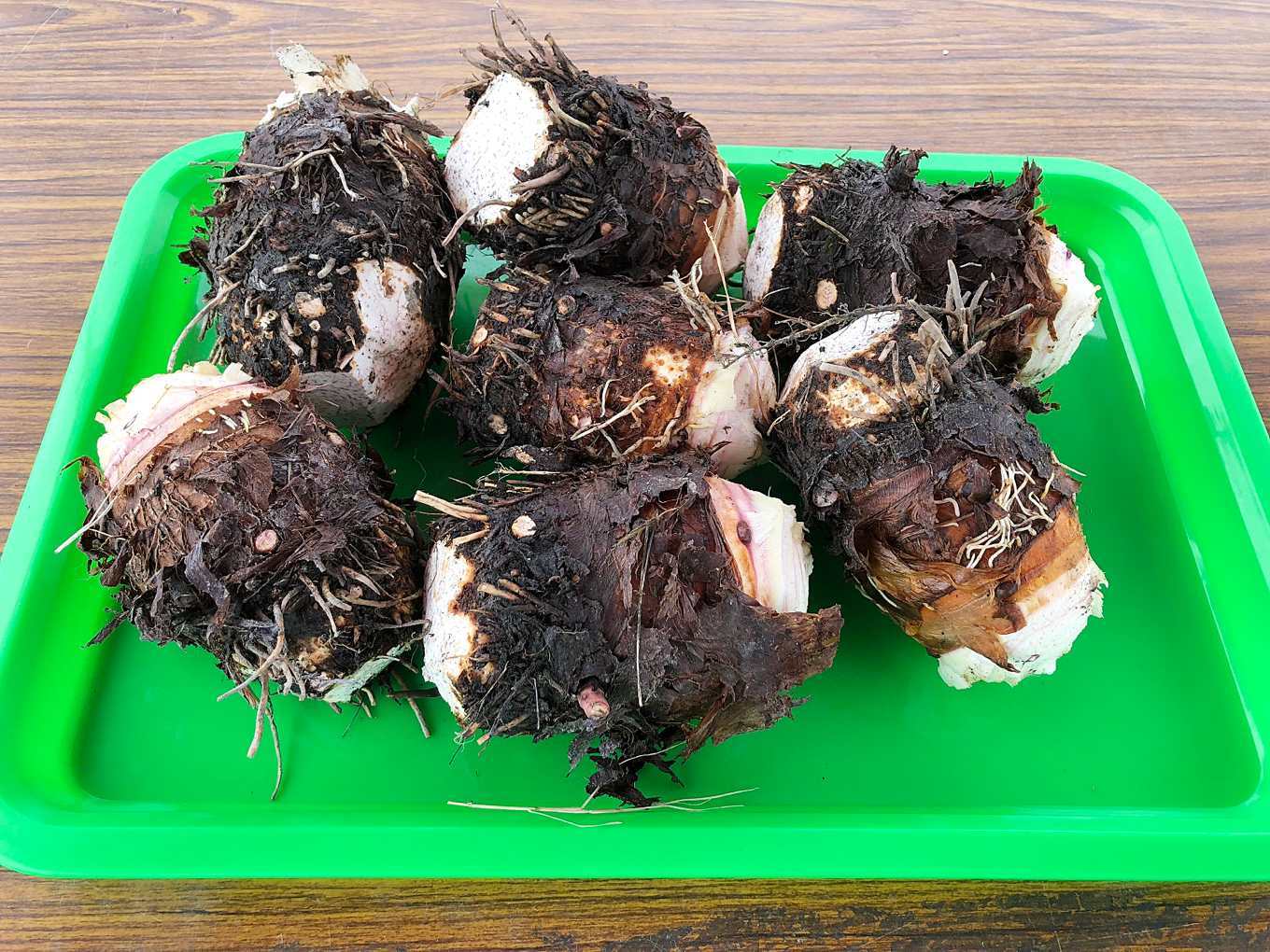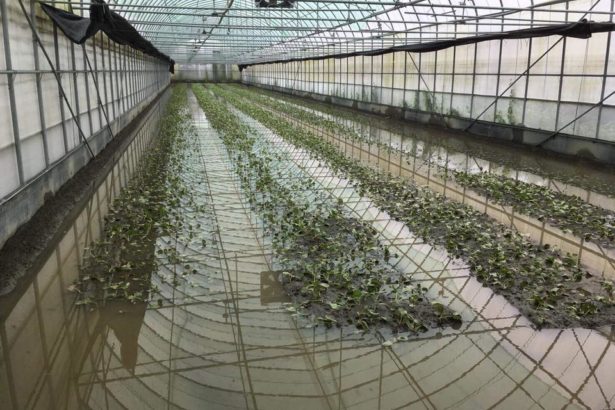Taro diseases and insect pests are difficult to pay attention to the habit of taro cheap, organic taro this road is not open? Professional taro farmers say so.
Share + 1 Tweet Email
Seeing that the organic rice market is gradually saturated, farmers want to find a way out of organic taro, but there are many diseases and insect pests in taro. Field management without pesticides and fertilizers requires more labor costs than habitual taro, and its output is more difficult to control. Even if the market price of organic taro can reach more than 100 yuan per jin, farmers who have grown organic taro for many years have pointed out that the organic taro market is still unstable. "quality and back-end access is the key."
The output value of organic taro per share in the flower-to-market experiment reached 200000. Cooperative farmers: it is still in the experiment.
The Hualien Agricultural Reform Farm of the Council of Agriculture recently tested an organic water taro cultivation model. Ni Lifeng, an assistant researcher in the crop Environment course of Hualien Agricultural Reform Farm, estimated that the output per cent of land this year would reach 1600 jin. Based on the market price, the annual output value of each unit could reach 200000 yuan. In the part of cost, Huaogeng estimates that the cost of organic fertilizer in the first stage of organic water taro is about NT $10,000 and the material for organic control is about NT $8500, but it is difficult to estimate the cost of manpower.
Shi Houzhong, an organic water taro farmer who cooperates with the experiment, points out, "if there are 2,000 pieces of land and 500 grams each are not worn out, this benefit can indeed be achieved." But the problem is that organic taro is difficult to overcome, the roots are easy to rot in the mature stage, and it is impossible that every one of them is intact. Shi points out that 1/3 or 1/4 rotten parts may have to be cut off, and there may be more than 300 grams left in one. "the ideal is different from the reality. I've only been experimenting with it for a year or two, and I may not be very mature yet."
In addition to the difficulties in farming, there are also difficulties in actual sales. Shi pointed out, "No matter how high the price is, there is no way to sell it." In the case of 130 yuan per jin, it is more expensive than a bento. It remains to be seen whether consumers can accept this price. "but to ask a lot of people about their willingness to buy, few people accept this price, only high-income people buy it."


Taichung Tachia organic taro farmer Lin Yizhen (Photo courtesy of Lin Yizhen)
Chen Guozhong, an organic taro farmer in Ilan: think about the market position before putting it into operation.
Chen Guozhong, a three-star organic taro farmer in Ilan, says that although he grows one hectare, because of the large planting interval and low yield, the harvest per share is only about 400 kilograms, and each taro is about 200 to 300 grams, which is acquired through channels and manufacturers. "it's OK to sell a penny by yourself, but it can't be sold out at all. Taro will go bad after being harvested for at most a week."
Consumers can gradually accept the price of more than NT $100. "through organic channels and processed products, they keep crashing into the organic taro market and slowly bumping out." But before the investment, you have to think about the market positioning. Now most consumers are small families, not too big, the demand is about 600 grams, 200-300 grams can be matched to consumer demand, if not too small, it is difficult to sell.
Change from flower to field: if the amount of nitrogen fertilizer used in taro is too high, it is more difficult to control diseases and insect pests.
Organic taro not only has market potential, but also has many benefits in the environment. There are many diseases and insect pests in taro, and farmers increase the use of pesticides and chemical fertilizers. The average amount of nitrogen fertilizer used per hectare is as high as 1100 to 1400 kg, double the recommended amount of 700kg. Ni Lifeng points out that the loss of chemical fertilizers is rapid, the fertilizer efficiency is declining, and farmers frequently replenish their fertilizer. "Farmers are used to growing large seeds, but they become fat, but diseases and insect pests are more difficult to control."
Tsai Wei-an, an assistant researcher in the crop Environment course, said that taro is used to planting several large areas, and farmers will not be particularly actuarial about the amount of use, just fattening and spraying all the time. However, they are all within the scope of use. "because the Jiyuan Garden cooperates with farmers, they will also come to the field for inspection regularly." Although Hualien wants to promote the organic village, many local professional farmers have a large planting area, and it is difficult for the improved field to intervene. This study of farmers looking for flowers and changing the field can actually experiment with the cultivation of organic water taro.
Organic rice market is saturated, try organic taro! There is a way to change the market, less fat, better health income.
Share + 1 Tweet Email
- Prev

2018 Yunlin Top Ten companion ceremony Award presentation ceremony
The 2018 Yunlin top ten companion ceremony award ceremony was held yesterday (23) in the people-friendly space in the hall on the first floor of Yunlin county government. Li Jinyong, county magistrate, Zhang Hongyou, director of agriculture, Liao Qiurong, head of Kuantong township, Zhong Fuzhu, head of Erzhu township, Huang Yiling, head of Gukeng township.
- Next

Torrential rain bombed farmland! Peanuts and melons were seriously injured and chickens and pigs suffered, and farmers were encouraged to "dry their tears and continue to do it again."
Torrential rain bombed farmland! Peanuts and melons were seriously injured and chickens and pigs suffered, and farmers were encouraged to "dry their tears and continue to do it again."
Related
- A course of planting techniques and methods on how to grow carrots
- How to plant the latest tulips?
- Is it better to pick tea in the morning or in the afternoon? When is the best time for tea to be picked? what is the third or fifth tea?
- Launch Yuanxiao Happy combination Haocha + Tea Yuan healthy Taste
- Penghu Tourism "Fireworks 20 Parade with You"
- 2022 West Lake Happiness holds "Digital Revitalization Voucher" and draws iphone13 and laptop.
- Banqiao Fuzhou social houses are designed to change start-up combined with police elimination to create a safe and livable environment
- The convenient measure of "mechanical weeding" in Xinbei has been abused and the Agriculture Bureau has imposed heavy penalties on the illegal land consolidation.
- Changgeng University Joins Hands with Four Memory Factories to Rescue Memory Talent Shortage
- The list of Taiwan's top 100 MVP managers is listed by the Director-General of the Farmers' Association of Sanxia District.

